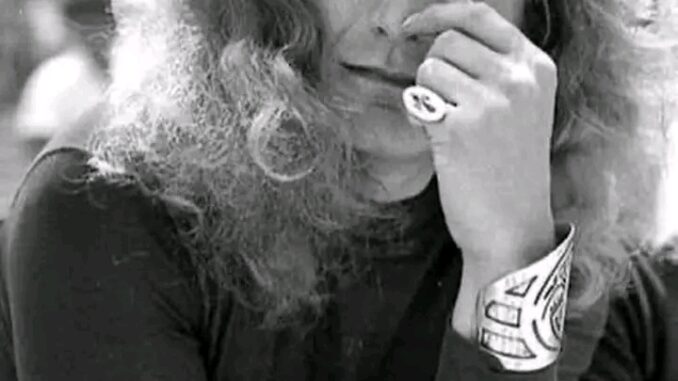
Robert Plant 1976 Los Angeles collesuim. Robert is wearing his signature metal ,bracket wrist bands. He started wearing. the metal wrist bands in 1969. Robert Plant is one of the most influential frontman in music history.
The roar of the Los Angeles Coliseum in 1976 reverberated with the unmistakable sound of Led Zeppelin, a band at the peak of their powers. On that stage, bathed in the spotlight, stood Robert Plant, a figure both imposing and ethereal. His signature metal wristbands, a constant companion since 1969, were a stark counterpoint to the raw energy erupting from the stage. More than just fashion accessories, they were a visual embodiment of the man behind the music, a testament to his enduring influence on the world of music.
The year 1976 marked a pivotal moment in Led Zeppelin’s career. They were at the height of their commercial success, having churned out iconic albums like “Led Zeppelin III” and “Houses of the Holy,” and their live performances were legendary. The Los Angeles Coliseum show, a monumental spectacle, was a perfect encapsulation of this era. The air crackled with anticipation as the band launched into a setlist that showcased their incredible musicianship and Plant’s unparalleled vocal prowess.
Plant’s stage presence was, and continues to be, captivating. He moved with a grace that belied the raw power of his voice. His eyes, often described as intense and insightful, held a depth that connected with the audience on a visceral level. The metal wristbands, a seemingly simple detail, became an integral part of his persona, a subtle yet significant visual cue that anchored him to the stage.
The origin of these metal wristbands, a seemingly simple accessory, is a microcosm of Plant’s artistic journey. He started wearing them in 1969, a period marked by the burgeoning intensity of the rock and roll scene. This was a time of experimentation, of pushing boundaries, and of forging a new path in music. The choice to wear the bands was not merely an aesthetic one; it was a statement of intent, a declaration of individuality in a world that was rapidly evolving.
Plant’s influence extended far beyond the stage. His vocal style, characterized by its raw emotion, its haunting melodies, and its unique range, remains a source of inspiration for countless musicians. He wasn’t just singing; he was embodying a spirit, a soul, a passion that resonated with audiences across generations. His ability to evoke a sense of mystery and wonder in his music, to weave tales of fantasy and reality, continues to captivate listeners.
The impact of Robert Plant extends beyond his vocal prowess. His lyrical content, often drawing inspiration from folklore, mythology, and the natural world, added another layer of depth to Led Zeppelin’s already rich musical tapestry. The band’s music became a reflection of Plant’s own internal journey, a journey that was both introspective and expansive, reaching out to encompass the world around him.
The 1976 Los Angeles Coliseum show was more than just a concert; it was a cultural event. The audience, a sea of eager fans, was a testament to the band’s enduring popularity. Plant, with his powerful vocals, his evocative stage presence, and, of course, his distinctive metal wristbands, became a symbol of the era. He was a leader, a visionary, a force of nature.
Plant’s influence extends beyond Led Zeppelin. He has collaborated with other artists, pushing the boundaries of musical genres and showcasing his versatility. His career has been marked by a relentless pursuit of musical exploration, a willingness to experiment, and a commitment to staying true to his vision. His work has had a profound effect on the world of music, shaping the careers of countless artists and inspiring generations of musicians.
The metal wristbands, a seemingly simple accessory, became a symbol of Plant’s enduring spirit. They were a reminder of his journey, of his evolution as a musician and a performer. They were a visual representation of the raw energy, the passion, and the profound impact he had on the world of music. In the context of the 1976 Los Angeles Coliseum performance, the wristbands became a silent commentary on the immense power of music, a power that transcends time and space.
The legacy of Robert Plant is more than just a collection of albums or a string of sold-out concerts. It’s a testament to the enduring power of music to connect us, to inspire us, and to shape our understanding of the world. His influence, palpable in the music of countless artists, continues to echo through the halls of music history. And those metal wristbands, a silent witness to his journey, stand as a powerful symbol of the man and the music that continue to resonate with us today.
Leave a Reply